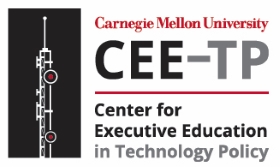Satellite Communications Policy in the New Space World
Lead Instructor: Jennifer Manner, Senior Vice President of Regulatory Affairs for Echostar Corporation, and co-chair of the Commerce Dept. Spectrum Management Advisory Committee
Space is now more accessible than ever, and also more important than ever as a means to host satellite communications networks. This course will delve into the resulting opportunities and challenges. It begins with an overview of satellite communications, its history, technology, and regulatory and policy issues. The technology includes Geosynchronous Orbit (GSO) Satellites, Non-Geosynchronous Orbit Satellites (NGSOs), low-earth-orbit (LEO) and medium-earth-orbit (MEO) satellites, mega constellations, small sats, and how satellites fit into 5G and beyond. This is followed by a brief overview of the key regulatory and policy issues, such as space sustainability and access to spectrum. After this overview, the course addresses a series of more specific issues. First, we explore more deeply how satellite networks are built, deployed, operated and deorbited (including both space and ground infrastructure), the different types of systems and orbits (GSOs, NGSOs, smallsats, etc.), and related technical information. We then go more deeply into spectrum management with regard to satellite networks, including an overview of spectrum management generally and why it is important, key bands used today and in the future by satellite networks, spectrum sharing both between satellite networks as well as sharing with other types of services, spectrum harmonization across nations, and the ITU process. We address how communications satellites can help address various policy goals, and discuss a number of key issues, including the role of satellite in 5G and 6G, how satellite can help reduce the digital divide, taking advantage of the resilience of satellites to improve disaster response. Next we will explore space sustainability, including the dangers of orbital debris and the challenges of managing it. We conclude with a discussion regulatory best practices for governments with regard to communications satellites, including the need for technology neutrality and inclusivity in policies, the need to adopt regulations that provide metrics that don’t dictate technologies, and security issues.
- This course is intended for people who are involved with any of a wide variety of policy issues involving satellites at either the domestic or international levels
- Upon completing the course, participants will have a deeper understanding of satellite policy issues such as spectrum management, space sustainability, and use of satellites to meet societal goals such as effective disaster response and bridging the digital divide.
- Some understanding of satellite technology or policy is useful, but none is required. Every participant will bring their own unique expertise and experience to the discussion.
